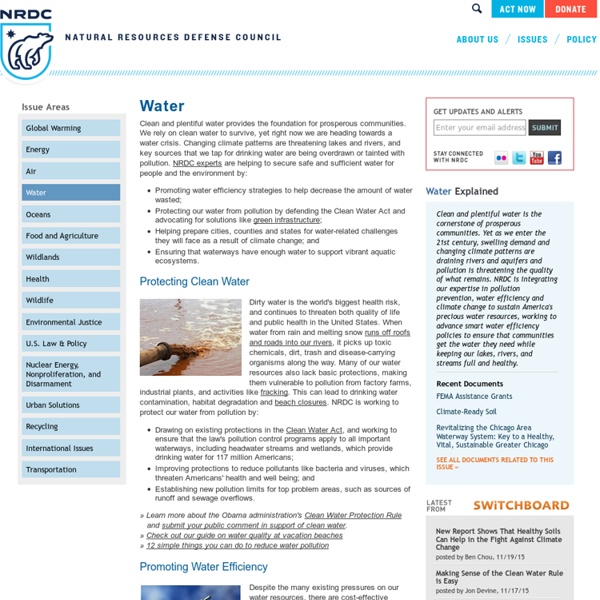Water Pollution Facts, Effects of Water Pollution, Clean Water Act

China to spend $330 billion to fight water pollution -paper
National Geographic Freshwater 101: Pollution
As technology improves, scientists are able to detect more pollutants, and at smaller concentrations, in Earth’s freshwater bodies. Containing traces of contaminants ranging from birth control pills and sunscreen to pesticides and petroleum, our planet's lakes, rivers, streams, and groundwater are often a chemical cocktail. Beyond synthetic pollution, freshwater is also the end point for biological waste, in the form of human sewage, animal excrement, and rainwater runoff flavored by nutrient-rich fertilizers from yards and farms. These nutrients find their way through river systems into seas, sometimes creating coastal ocean zones void of oxygen—and therefore aquatic life—and making the connection between land and sea painfully obvious. In the developed world, regulation has restricted industry and agricultural operations from pouring pollutants into lakes, streams, and rivers. Fast Facts
Cambodian shoe factory collapse kills 2, injures 7
PHNOM PENH, Cambodia (AP) — The ceiling of a Cambodian factory that makes Asics sneakers collapsed on workers early Thursday, killing two people and injuring seven, in the latest accident spotlighting the often lethal safety conditions faced by those toiling in the global garment industry. About 50 workers were inside a workroom of the factory south of Phnom Penh when the ceiling caved in, said police officer Khem Pannara. He said heavy iron equipment stored on a mezzanine above them appeared to have caused the collapse. Two bodies were pulled from the wreckage and seven people were injured, he said. Rescuers picked through rubble for several hours and after clearing the site said that nobody else was trapped inside. At a clinic where she was being treated for her injuries, worker Kong Thary cried on the telephone as she recounted the collapse. "We were working normally and suddenly several pieces of brick and iron started falling on us," the 25-year-old said. The U.N.'
Related:
Related:



